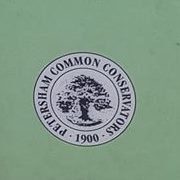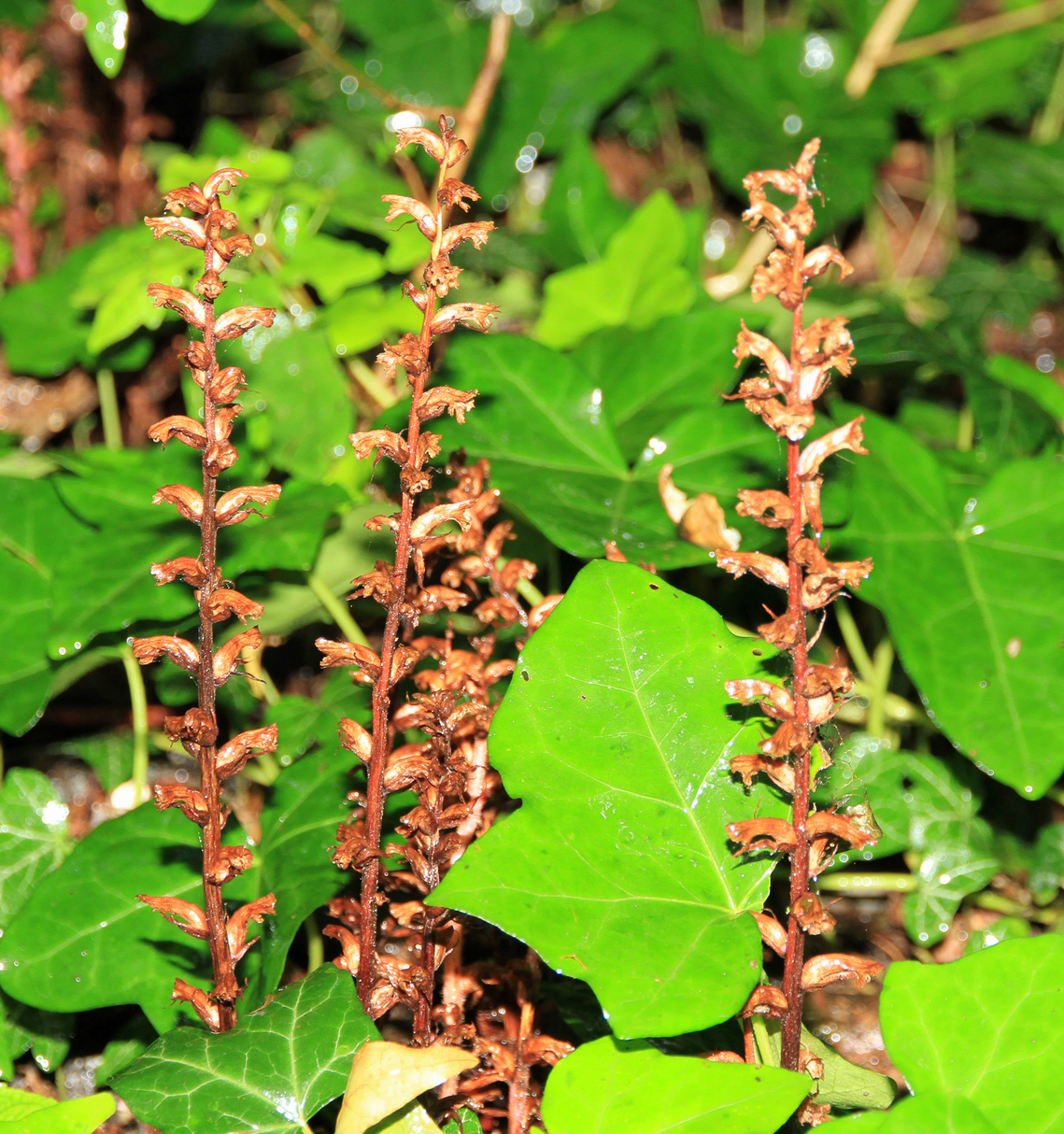2020 we planted 3,200 wildflowers to help augment the diversity of the woodland and to provide some vital food sources for invertebrates. These also provide colour that we enjoy seeing!
We regularly plant wildflowers to encourage bees and other invertebrates. For example, in 2021/22 we added 600 “in the green” native bluebells and 300 red campions to recently prepared sweet chestnut and hazel coppice glades.
Bluebells typically flower in April/May, followed by red campion and the beautiful blue bi-annual wood forget-me-not. These help to diversify the woodland herbaceous layer and to provide vital food sources for invertebrates.
Mushrooms are a welcome aspect of our protected natural habitat. Petersham Common has one of the highest concentrations of ivy broomrape in the UK and is an unusual plant having no chlorophyll and living a parasitic life off ivy. The flower appears in mid and late summer.
Ivy Broomrape (Orobanche hederae) along Dysart Path
Sustainable Drainage System (SuDS) help us to reduce soil and path erosion whilst enhancing the habitats. In 2024 we established a natural swale (a very shallow damp pond area) near the bottom of “Dysart Rise Path” and create a seasonal wet area using rainwater from SuDS. This will help to manage flood water and offset water shortages as well as provide a valuable habitat for numerous species. It will be lined by Richmond Hill clay - established when this land was a moraine in the glaciation period c10,000 years ago.

